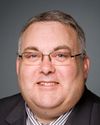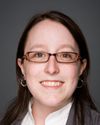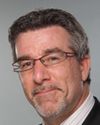Mr. Chairman and members of the committee, thank you for the opportunity to present my objections to the final report issued by the Saskatchewan boundaries commission.
I come here representing the interests of my constituents, who I am proud to serve today and every day that the House sits. I should note that I am not running for a third term; I'll just leave it there.
It concerns me that the commission was predisposed to dramatically shifting the boundaries from the outset. I reference page 4 of the final report. This commission has indicated that they felt “the time had come” to create a dedicated situation different from the one currently in existence.
This is simply not for the commission to decide. A definite problem arises, since they have steadfastly maintained that position despite resounding opposition. They maintain that position although the community in Saskatchewan has said, “We don't like this.”
The initial draft stated that the commission received over 200 pieces of communication, from brief one-sentence to one-paragraph notes to formal documents, which favoured moving away from the hybrid urban-rural model. They considered these communications, yet disregarded the vast majority of 3,000 letters and public submissions that were in favour of keeping the current model.
It is clear that the commission has taken an inflexible position. The commission received arguments from MPs, mayors, reeves, city councillors, business leaders, and residents, and rejected all of those arguments. These are people who know the variety of issues facing the many concerns of our province. These are people who know the impact that dramatically shifting boundaries has on people.
I will discuss a few of these rejected arguments, including the one indicating concern because Saskatchewan's two largest cities would be left with three representatives instead of four. This means that there would be fewer seats at the table to advocate for issues and projects within those cities. MPs, city councillors, and business leaders indicated as much in their presentations to the commission.
Furthermore, the commission has this notion that residents of Regina and Saskatoon have unique issues, compared to smaller centres such as Moose Jaw, Yorkton, or Estevan. This is a preposterous notion. I know that residents of my riding are just as concerned about housing, roads, transportation, jobs, and all the other things that are having an impact on urban people.
The Saskatchewan Urban Municipalities Association, known as SUMA, currently does not consider Regina and Saskatoon to be the only municipalities with urban issues. In fact, they define an urban area as one with at least 5,000 people, which means that Saskatchewan has sixteen cities, not two. Melville is considered a city even though the population has fallen under 5,000.
If our son or daughter plays hockey, does it matter if we travel on city streets or a grid road to the arena? I mention these because there seems to be an overabundance of the notion that we can't have what we now have, and that it has to be split off. Do do we really think that snow shovels easier in rural Saskatchewan than in urban Saskatchewan? Ladies and gentlemen, these are false notions.
As we contemplate creating divisions in the province along urban and rural lines, we need to consider the life events that do not have boundaries.
Professor John Courtney, a member of this commission, supported this way of thinking when he stated on page 113 of his book, Commissioned Ridings: Designing Canada's Electoral Districts, that “designing hybrid rural-urban seats ignores the fact that social interests are layered in multiple ways and that only one of these is place of residence”. Professor Courtney went on to write that “many who live on the fringes of a city but beyond its actual municipal [boundaries] have their place of employment, are entertained, do their shopping, or are educated in the city”.
It would seem that the professor has changed his position on this. This is a major point, since Professor Courtney has created boundaries contrary to his own viewpoint.
Before I begin to close, I'd like to note that during the federal electoral boundary review in 2002, Dick Proctor, the former NDP MP for my riding of Palliser, argued in favour of the hub-and-spoke model.
In conclusion, like they did in 2002, Saskatchewan residents have indicated loud and clear that they're opposed to strict boundaries between the largest cities and the rural areas.
Simply put, electoral districts and boundaries should be based upon the reasoning put forward by residents. As mentioned, the commission was predisposed to a dramatic shift and steadfastly maintained that position despite significant opposition. I urge the committee to reject the current proposal put forward by the Federal Electoral Boundaries Commission for Saskatchewan.
Thank you for listening. I look forward to your questions.









